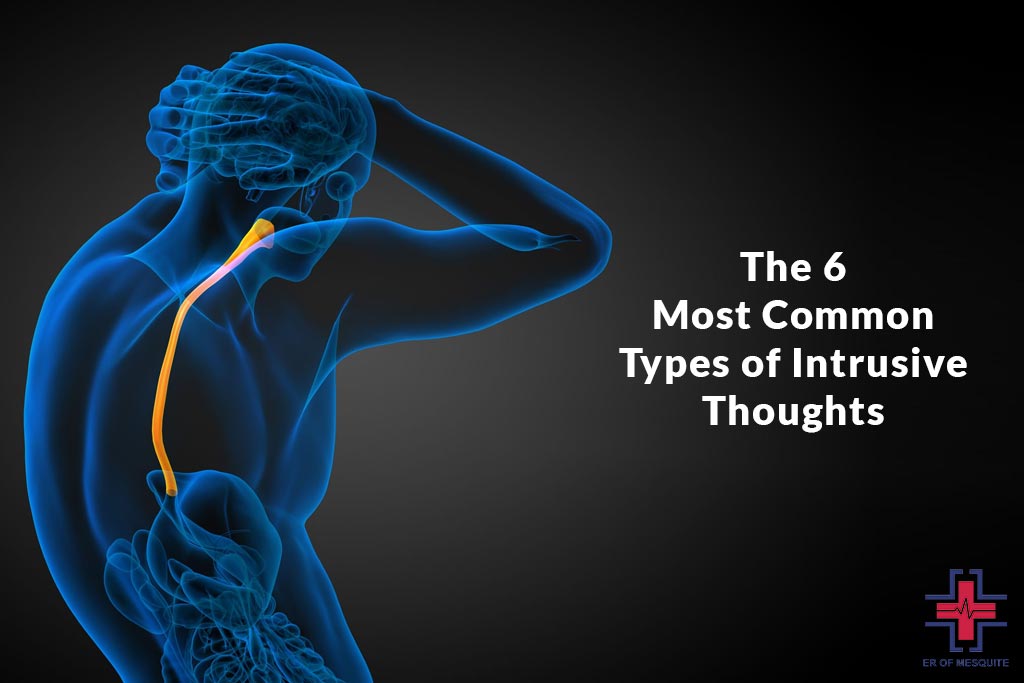You have a million thoughts daily but don’t even notice them; you just believe them. We swim our thoughts like a fish swims in the water – we don’t even see that the way she swims we think colors our view of the world. Or sometimes we do notice.
Sometimes, we notice thoughts we don’t like and don’t know what to do with them. Sometimes you fight them, or you struggle against them, but you know if, for example, you think, “Oh, I’m such an idiot,” and then you tell yourself, “No, I’m the smartest person in the world,” that doesn’t necessarily feel any better.
Sometimes, you get stuck in an endless loop of overthinking, obsessively struggling against a thought, or worrying about something. But that’s no better because struggle steals your attention and energy. Our thoughts are like glasses: the lens through which we see the world. If you think the world is a terrible, mean place, that’s what you’ll see.
If you think people are inherently good, that’s what you’ll find. This blog teaches you how to get unstuck from your thoughts. You’ll learn how to look at your thoughts instead of through them.
You’re going to learn how to take off your glasses, how to look at them, and then decide if you want to hang on to them or if you want to choose a different pair. This skill is called cognitive defusion. It’s the difference between having a thought and buying a thought. This is such a powerful skill for processing emotions and fighting depression and anxiety.
If you want to improve your mental health, the skill of cognitive defusion teaches you to separate yourself from your thoughts. And this can give you power over your thoughts instead of letting them run the show. Do you know at least three people? If so, then the odds are good that you know someone who experiences mental illness. But if you’re like most people, you may feel anxious and uncertain about how to help. Everyone needs to learn these skills, but most people have yet to be taught them.
In this blog, we’re going to talk about recognizing all of our thoughts and separating ourselves from them and then selectively choosing which thoughts or beliefs you want to act on or buy, as we say, instead of letting random subconscious thoughts dictate your mood, your choices, and your ultimate happiness.
Whether you have OCD, ADHD, or anxiety, it’s essential to understand the difference between impulsive thoughts versus OCD intrusive thoughts.
What Are Intrusive Thoughts?
Intrusive thoughts are words or images that pop into your mind unwanted. They’re often disturbing. They have little to do with what you’re doing or with reality. And the distressing thoughts can seem loud, demanding your attention.

Even when others tell you a thought isn’t genuine or doesn’t mean anything, it may feel so disgusting that it’s hard to believe. And these thoughts might make you wonder if you’re secretly a terrible person. Maybe you think they’d be horrified if they knew how dark your thoughts were.
Intrusive thoughts experienced by someone with OCD are unwanted. They’re reoccurring and distressing thoughts, images, and impulses that cause significant anxiety. The obsessions are irrational. They’re ego-dystonic, inconsistent with one’s core beliefs, values, and desires.
Now, these thoughts are so distressing they result in a solid urge to neutralize them or suppress them through compulsive behaviors and mental rituals.
Examples of Intrusive Thoughts in OCD
Things like contamination fears. Individuals may experience intrusive thoughts about being contaminated by germs or chemicals, radioactivity, illnesses, or even emotions. These thoughts can lead to excessive hand-washing avoidance behaviors or a preoccupation with cleanliness. There are also harm-related obsessions, and individuals, in some cases, have intrusive thoughts about causing harm to themselves or others, even though they have no intention of doing so. And this can lead to rituals such as repeated checking, seeking assurance, and avoidance behaviors. Now, people with intrusive thoughts find them distressing and anxiety-provoking, causing them to question their character and how they’ve always known themselves to be.
The 6 Most Common Types of Intrusive Thoughts
While intrusive thoughts can be uncomfortable, you’ll learn that they don’t mean anything about you. Study after study after study has shown that almost everyone has intrusive thoughts from time to time. Random, unwanted, disturbing thoughts are the norm, and almost everybody has intrusive thoughts at some time.

Healthy people, average people, anxious people, calm people, people with OCD – they all have them. Most people just brush them off. But for people with OCD or anxiety disorders, intrusive thoughts can feel very intense, and then the way they respond to the intrusive thoughts can make them louder.
So first, let’s cover the top six most common types of intrusive thoughts, and then we’ll briefly talk about how to stop feeding them. So here are the six most common types of intrusive thoughts.
Thoughts of Self-Harm
These are thoughts like, “What if I kill myself?” “What if I jump off this building?” “What if I crash my car on purpose?” Or if while you’re holding a knife, “What if I lose control?” “What if I cut myself?” With intrusive thoughts, you don’t want to hurt yourself. The thought frightens you. But if the idea keeps coming back, it can be pretty distressing.
Thoughts of Harming Others
These are super common thoughts like, “What if I push someone off the stairs?” or while you’re holding a knife, “What if I stab someone?” “What if I push someone in front of a car?” “What if something I do or don’t do harms someone I care about?” “What if I’m secretly a serial killer or a sociopath or a narcissist?” Uh, thoughts like you might hurt the baby or drop the baby are super common. Nearly half of new parents experience fearful thoughts about hurting a baby. Now, again, you don’t want to hurt someone. You get no pleasure from these thoughts. They scare you, but the thoughts keep coming back.
Sexual Thoughts
These include fear of doing sexual acts with a child fears that you have or that you will touch someone inappropriately, visualizing someone naked, and fearful thoughts about gender or sexual identity. For example, persistent thoughts of being gay despite being straight.
Immoral or Religious Blasphemous Thoughts
These are thoughts like, “What if I sinned?” “What if I’m not 100% honest?” “What if I break this religious rule?” This subset of OCD is called scrupulosity.
Self-Doubts and Mistakes
These are what-ifs, you know. “What if I’m not good at my job?” “What if I made a mistake?” This is fear of doing something embarrassing, like shouting profanity in a quiet church service. Thoughts like, “What if I cheat on my spouse?” “What if I don’t love my wife, even though she means the world to me?” Right? These are just persistent doubts.
Contamination Fears, Health Fears
These are things like, “Oh, what if my hands have germs?” “What if I have cancer?” “What if I have COVID?” “What if I have HIV?” and then also fear of sticky substances, bodily fluids, household cleaners, and like thoughts like, “Oh, what if I contaminate someone else?” Now, there is a seventh category, which I’m grouping separately, and these are unwanted thoughts of past trauma. These include bad memories and flashbacks. And these are connected more to actual events and PTSD than to just random thoughts, so that’s why they’re in their category.
Okay. So, those are the six most common intrusive thoughts that people have.
Solution of Handling Them
So now let’s talk briefly about what you can do about them. So, when it comes to intrusive thoughts, the first thing to remember is that having them doesn’t mean anything about you. Again, most people have intrusive and unwanted thoughts. The difference with OCD is how you react to them.
Researchers studied 777 college students in 13 countries and found that 94 of them had experienced unwanted or intrusive thoughts in the last three months. So, having these thoughts doesn’t mean there’s something wrong with you. One difference between someone healthy and someone with OCD is that someone with OCD will start to worry, you know, “What does this thought mean about me? Does it mean I’m a pedophile? Does it mean I’m violent?” And they’ll get stuck in this cycle of trying to suppress, resist, or control thoughts. But the way the brain works, whatever we give attention to the brain, makes it louder. So, those fearful attempts to control those thoughts make them feel more substantial. Having a thought doesn’t mean you’ll act on it.
Therapists who specialize in OCD treatment spend much of their day doing exposure therapy with clients.
So they’ll take a client who thinks, “Oh, what if I push someone down the stairs?” and take that client to a stairway, and they’ll stand with their back to the client. And, you know, the thought probably pops up, but then no action is taken. Or they’ll hand knives to someone with thoughts of cutting someone – now, by the way, I am not necessarily saying that you should try exposure therapy on your own. So, if you’re experiencing OCD or anxiety, of course, I recommend working with a licensed professional who knows how to use exposure therapy. But this process works. Exposure response prevention. It’s uncomfortable at first. Your anxiety will go up. But then your brain will learn that the thoughts aren’t dangerous and’ll diminish over time.
Just because you think something doesn’t mean it’s true, and it doesn’t mean you’ll act on it, especially if it’s a distressing thought for you. So there’s a big difference between dwelling on a thought because you relish it and having an idea pop in over and over because you’re scared of it.
The second thing to do with intrusive thoughts is just to learn to stop feeding them. Carl Jung said, “What you resist not only persists but will grow in size.” So people with a healthy reaction to random thoughts just have a weird thought, and they’ll go, “Oh, that was weird,” and then they’ll move on. But when we try to resist, suppress, control, or avoid thoughts or act on them or believe they mean something, the thoughts get louder and stickier. So you can actually learn the skill to separate yourself from your thoughts, to notice them and let them pass by.
What Are Impulsive Thoughts?
The term “impulsive thoughts” describes quick, uncontrollable ideas or urges that result in impulsive actions. These sudden ideas encourage you to act without thinking through the repercussions.
Impulsive thoughts are very different than intrusive thoughts. People with ADHD often experience impulsive thoughts, and they can arise spontaneously. Impulsivity in people with ADHD refers to a core symptom where individuals have difficulty controlling their immediate reactions or their responses. It can manifest in behaviors like interrupting others and having difficulty waiting for turns. Now, individuals with ADHD may experience fleeting thoughts that can divert their attention from the task at hand, but they typically do not attach intense significance, anxiety, or distress to those thoughts.
Impulsive thoughts in people with ADHD and intrusive obsessions in people with OCD differ in three key aspects.
- The nature of thoughts. Impulsive thoughts in ADHD arise spontaneously. They’re unrelated to the current task. In contrast, intrusive thoughts in OCD are repetitive, they’re unwanted, and they cause distress and anxiety.
- Control and intentionality of the thoughts. Impulsive thoughts in people with ADHD are typically unintentional, and they occur without a conscious effort, whereas individuals with OCD intrusive thoughts have this distressing inconsistency, resulting in attempts to suppress those thoughts.
- The impact on behavior. Impulsive thoughts in people with ADHD may lead to rash actions or difficulties in maintaining attention and focus, whereas intrusive obsessions in people with OCD, on the other hand, drive individuals to engage in compulsive behaviors or mental rituals that are aimed at reducing anxiety and neutralizing the distress caused by the obsessions.
Impulsive Thoughts Example
Examples of impulsive thoughts are sudden urges to spend money or say something inappropriate.
How to Control Impulsive Thoughts:
several interventions can effectively curb impulsive and risk-taking behavior. If you’re struggling with impulsivity, consider the following approaches:
Practicing Mindfulness
This time-tested strategy helps sharpen self-awareness by encouraging you to focus on the present moment and accept your thoughts and feelings without judgment. This technique helps you distance yourself from your urges and their triggers, which may allow you the space to decide to take a different course of action.
Recognizing and naming an urge before it comes is a valuable technique. For example, “This is anger I am feeling, and it’s making me want to pick a fight with my spouse.” From there, you can work to identify other, healthier outlets for your urges.
Avoid Situations That Trigger Impulsive Behavior.
If your route to work takes you past a store where you often impulse shop, take a different path. If you interrupt your co-workers in Zoom meetings, keep yourself on mute. Try to adapt your environment to make problematic impulsive behavior more difficult.
Ask For Help
Commit to talking to a trusted friend or family member before making any big decision. Ask their advice, and talk through your thought process.
Create Alternate Outlets For Your Impulsivity
If you’re prone to interrupting during meetings, keep a pad and pen to write down your thoughts as they come. If you pick fights with your spouse whenever you get irritated, commit to an exercise routine like boxing or running that helps you process your thoughts and release frustration.
Causes of Intrusive And Impulsive Thoughts
Though they differ in how they present and what happens to them, intrusive and impulsive thoughts have similar root causes. Understanding these factors might help you manage unwanted thoughts and why they occur.

Source of Trigger
Impulsive: Various stimuli, emotional reactions, and specific psychological states can all trigger impulsive ideas. For example, impulsive thinking may occur in people with ADHD as a result of difficulty with self-regulation or as a reaction to a demand for excitement.
Intrusive: Stress or worry are frequently linked to the things that set off intrusive thoughts. These thoughts may be brought on by particular obsessions or phobias in people with disorders such as Obsessive-Compulsive Disorder (OCD). Traumatic events from the past may occasionally also serve as a powerful trigger.
Controlling Level
Impulsive: There is usually low control over impulsive thoughts, as they often lead to immediate actions. However, with strategies like mindfulness or behavioral therapy, individuals can learn to increase their control over these impulses.
Intrusive: These thoughts are often experienced as uncontrollable. Individuals might find it challenging to stop or redirect these thoughts, leading to helplessness or frustration.
Frequency
Impulsive: The frequency with which an individual has impulsive thoughts varies widely based on underlying factors. These kinds of ideas could be commonplace for an individual with ADHD as part of the symptoms of the illness.
Intrusive: Very often, intrusive thoughts might occur, particularly in people with anxiety problems. These ideas may come to you more frequently when you’re under a lot of stress or anxiety.
Duration
Impulsive: Impulsive thoughts typically don’t last very long. They pass rapidly, causing one to act on them without giving them much time to settle before moving on to the next idea or task.
Intrusive: These are usually persistent ideas that can stay with you for extended periods, particularly if they are associated with OCD or anxiety disorders. The person’s attempts to repress or examine these ideas may cause them to last longer.
From Contemplation to Addiction: An Upsetting Shift
To appreciate the seriousness of intrusive and impulsive thoughts, one must understand how they can lead to addiction. Many people start their trip by trying to calm the craziness in their heads. Drinking to ease tension or taking medication to alleviate worry are examples of seemingly innocent behaviors that can eventually turn into demands that are as strong as the thoughts themselves. This shift from cognition to addiction highlights the harmful effects of self-medication and emphasizes how crucial it is to get professional assistance before these behaviors become ingrained.
FAQs:
Is Having Intrusive Thoughts Normative?
Yes, it is typical to get intrusive thoughts. They are widespread and can cover everything from upsetting subjects to regular worries. Though generally controllable, persistent or extremely troublesome intrusive thoughts may need consulting a therapist for possible interventions.
Is Having Impulsive Thoughts Normal?
It’s also expected to have impulsive thoughts and sudden desires resulting in unplanned behaviors. These ideas range in intensity and are a common component of human cognition. Seeking the advice of a mental health professional is recommended if impulsive thoughts result in troublesome acts or suffering.
Can Impulsive Thoughts Sometimes Be a Reaction to Intrusive Thoughts?
Unlike unwanted intrusive thoughts, whimsical ideas are frequently the result of sudden urges or a need for instant action. On the other hand, impulsive behavior can occasionally be a response to intrusive thoughts, particularly in those who are depressed or anxious. For example, someone might have disturbing intrusive thoughts and act on the impulse to do something to feel less anxious. This pattern demonstrates how the two mind types interact, creating a vicious cycle of ideas and deeds that might call for expert help.
How Can Someone Tell If Their Impulsive Actions Result from Underlying Mental Health Issues?
Determining whether impulsive actions are indicative of mental health issues involves examining the frequency, intensity, and impact of these actions. If impulsive thoughts lead to actions that cause significant distress, disrupt daily functioning, or result in negative consequences, it might indicate an underlying issue. Common examples of impulsive thoughts that lead to problematic actions include spending money one can’t afford or making rash decisions without considering the consequences.
Why Do I Have Impulsive Thoughts?
Intrusive thoughts can occur due to various factors, including anxiety, stress, depression, trauma, or other underlying mental health conditions. They may be due to imbalances in brain chemistry, environmental stressors, or learned thought patterns.
Conclusion:
Everyone behaves impulsively sometimes. Most of the time, we can work to limit those behaviors independently. Sometimes, impulsive behavior is part of an impulse control disorder or other type of mental health condition. These disorders can be treated. If you have significant problems due to impulsive behavior, help is available at the Urgent Care Mesquite. Take the first step and see a doctor.
